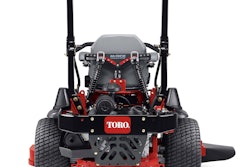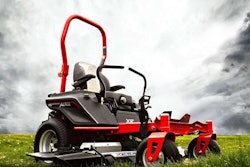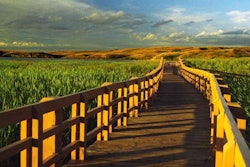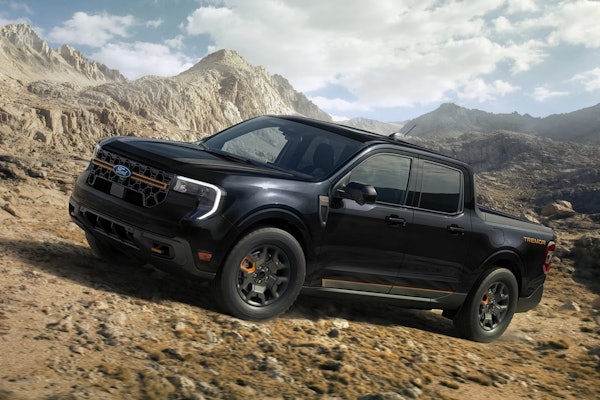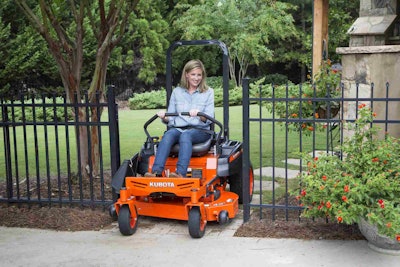 High-quality equipment has safety features built in.
High-quality equipment has safety features built in.Those mowing safety tips that get pushed out every season in a variety of popular media aren’t just for amateurs. Landscaping professionals would do well to review the fundamentals of mowing safety regularly if only to ensure you’re ready to pass them along to employees or crew members you supervise.
According to Consumer Reports, more than 15,000 Americans a year end up in emergency rooms due to mowing accidents. Granted, some of those injuries turn out to be relatively minor cuts and burns; others, though, involve the loss of a limb – and fatalities.
The Consumer Product Safety Commission, or CPSC, says the worst mowing accidents often involve a loss of stability and eventual blade contact with the operator’s body. For example, a tractor with a mowing device might tip over, causing the operator to be run over by the blade after falling from the unstable machine. And make no mistake: The same types of accidents can happen with smaller mowers.
Read before you mow
Experts say one of the most important things to do is to read the owner's manual for your specific machine. Don’t assume the equipment you’ve just put in the field operates just like the equipment you’re replacing.
And heed the advice of the Outdoor Power Equipment Institute, or OPEI, by choosing the right mower for the job. Machines that are too big for a particular site aren’t as safe, while a mower that’s too small for the job isn’t just inefficient; it may well be unsafe for the task at hand.
One of the most important features to look for is an operator-presence system, which automatically turns off the blades when the operator dismounts – or, in the case of push mowers, lets go of the handle.
Once the manual is read and understood, the most important piece of information to know is how to “emergency stop” the vehicle, including the blade. It’s best to test drive the machine to get a feel for how it runs before engaging the blade, according to the West Virginia University Extension Service.
Even on hot days, it is best to wear long, snug-fitting pants and covered shoes. Loose-fitting clothing may get caught in moving parts, according to WVU Extension. Eye and hearing protection is important as well.
Before mowing, scan the terrain for bumps, rocks, and small hills. Branches may be hiding in long grass, so remove those before mowing. Because a mower’s engine temperatures can be extremely high, be sure to fill the gasoline tank before you begin mowing. If the tank empties during use, make sure to let the engine cool before refilling.
Make it a solitary ride
Riding mowers are made for one person. Allowing your client’s cute little toddler to take a ride is never a good idea. In fact, before mowing a given area, try to ensure that both children and pets are out of the area and will remain so until the job is done. If a bystander approaches, the proper protocol is to stop the equipment. Only kids over the age of 16 should operate riding mowers, according to the American Academy of Pediatrics.
Again, remember that one of the most common causes of injuries when using a riding mower is tipping over and the most common place for this to occur is on slopes. Mow slopes up and down; never mow them crossways. If your equipment won’t get up the slope, stop mowing, says the CPSC. Also, don’t coast when mowing downhill. In general – but especially on sloped terrain – try to avoid sudden jerks and starting and stopping.
Do not ride a riding mower near a ledge. It is best to use a push mower or trimmer in those areas. Machines may jerk, or the ground may crumble, causing the operator to fall or possibly be crushed by the machine.
Maintaining your riding mower makes a real contribution to safety as well as the life of your equipment. Make sure guards are secured, belts are not loose and grass has not built up. Do not alter your rider to make things “easier.” Guard devices may annoy you, but they are there for a good reason.

